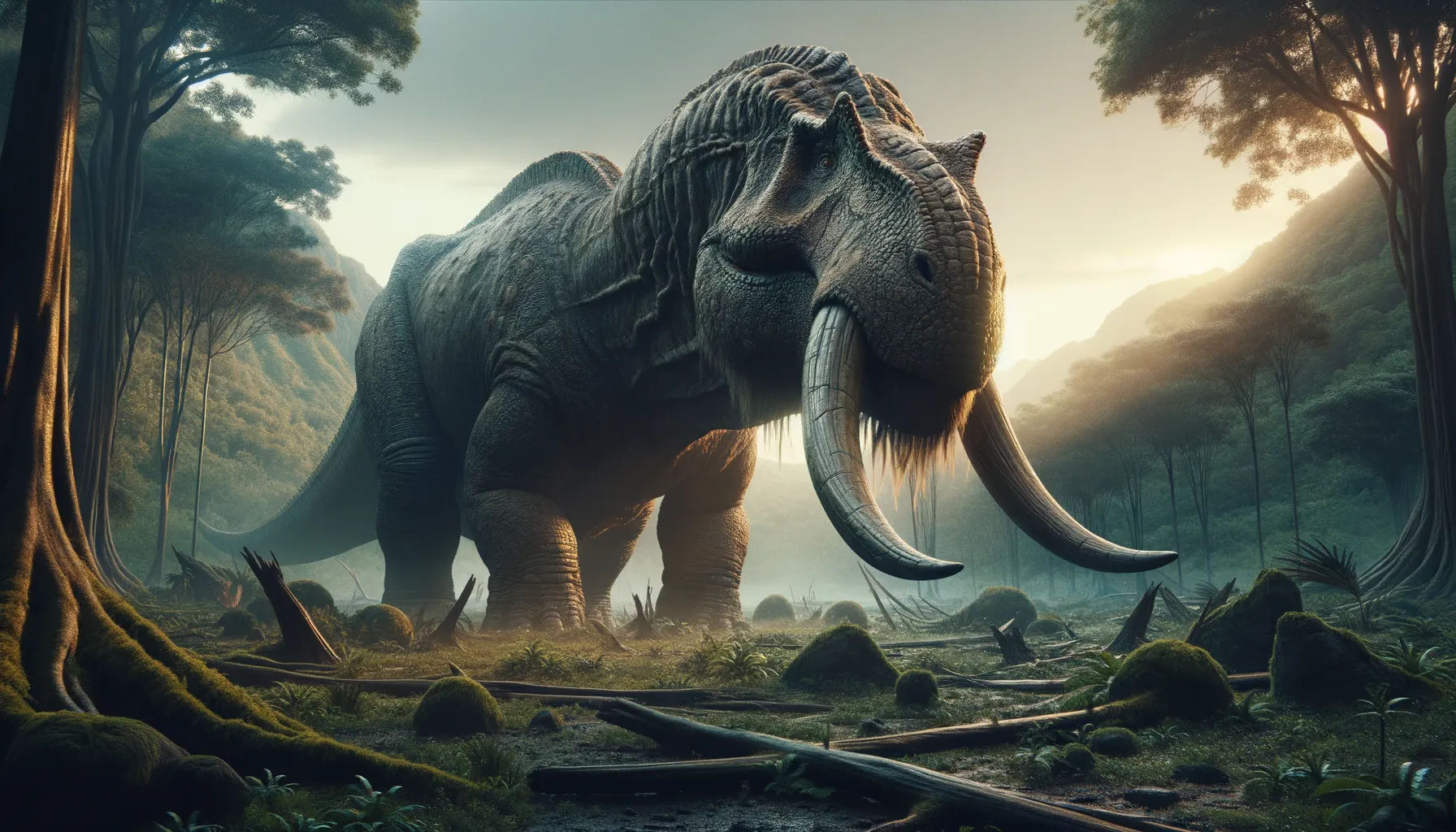
Dinodocus
The gentle giant of the Jurassic era!
Period
Jurassic
Length
Roughly 25 meters from head to tail.
Height
About 4 meters at the shoulder.
Weight
Approximately 15 to 20 tons.
Dinodocus was a colossal dinosaur that roamed the Earth during the Jurassic period. Known for its massive size and sturdy build, it was among the larger dinosaurs of its time. Despite its intimidating presence, it was a herbivore, relying on vast amounts of vegetation to sustain its enormous body. Its fossilized remains have provided invaluable insights into the lives of these gentle giants.
Diet
Dinodocus was a herbivore, feeding primarily on ferns, cycads, and conifers. Its long neck allowed it to reach high vegetation that other ground-dwelling dinosaurs could not access.
Hunting
Being an herbivore, Dinodocus did not engage in hunting behaviors. Instead, it foraged for plants, using its height advantage to reach foliage beyond the grasp of other herbivores.
Environmental challenges
Dinodocus faced periodic environmental challenges, such as seasonal droughts which could limit its food supply. Large predators posed a threat, although its size and herd behavior likely provided some protection. Climate fluctuations during the Jurassic period influenced the availability of its preferred plant-based diet.
Speed
Relatively slow-moving due to its massive size.
Lifespan
Likely lived up to 80-100 years.
First discovery
First discovered in western Europe in the early 1900s.
Fun Facts
- Dinodocus was a long-necked dinosaur that lived during the Late Jurassic period.
- Its name means 'terrible beam', referring to its long, whip-like tail.
- Dinodocus is believed to have been a herbivore, feasting on lush vegetation of its time.
- It is thought to have roamed in what is now Europe, with fossils found in France.
- With a length of up to 20 meters, Dinodocus was one of the larger dinosaurs.
- Despite its size, Dinodocus likely had a relatively small head compared to its body.
- The dinosaur's fossil discovery helped shape our understanding of sauropod diversity.
Growth and Development
Young Dinodocus dinosaurs experienced rapid growth in their early years to outgrow potential predators. They developed their distinct long necks and heavy bodies as they matured. Social living likely benefited their development, offering protection and fostering cooperative behaviors.
Habitat
Dinodocus inhabited lush floodplains with abundant plant life, essential for its herbivorous diet. These floodplains were characterized by rivers, dense forests, and wide open spaces that supported its nomadic lifestyle. Seasonal changes in their habitat necessitated migration to regions with adequate vegetation.
Interaction with other species
Dinodocus interacted with many other herbivorous species, often competing for food resources. Its main predators were large theropods, which it countered through sheer size and group living. Symbiotic relationships likely existed with smaller species that benefited from its leftover plant material.
Natural lifespan
The natural lifespan of Dinodocus was typically around 80 to 100 years.
Reproduction
Dinodocus laid eggs, usually in a communal nesting area to protect them from predators. These large eggs incubated for a few months, after which hatchlings emerged and were protected by the herd until they could fend for themselves.
Social behaviour
Dinodocus displayed strong social behavior, often living in large herds for protection and cooperative foraging. They relied on vocalizations and possibly visual signals to communicate within groups. This social structure was crucial for raising young and ensuring the group's survival.
Fossil locations
Fossils of Dinodocus have been found primarily in western Europe and some parts of North America. These fossilized remains have been discovered in sedimentary rock formations, which indicates their habitats were once lush with vegetation. Some notable specimens have been displayed in natural history museums, contributing to our understanding of their life histories.
